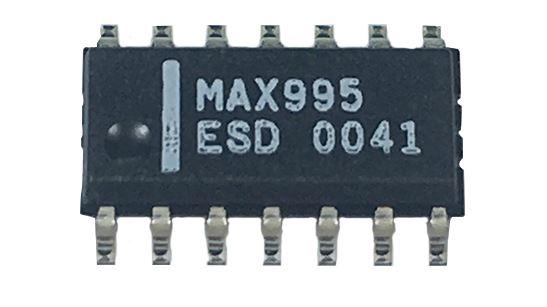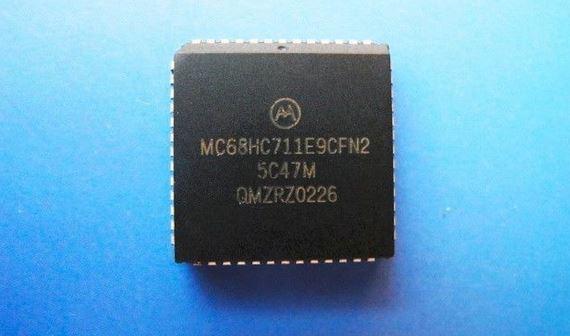What Is Security Management IC? The Complete Guide
What is Security Management IC? The Complete Guide

Image of security IC / Rantle
In this digital world, it is impossible to overlook matters of security. Data security has emerged to be one of the hottest topics, especially when we consider the fact that everything in the modern world is dependent on data.
There are many ways of enforcing data and device security. One of the methods entails the use of semiconductor chips or integrated circuits.
Dedicated integrated circuits have been designed to take care of different aspects of security in electronic devices.
These ICs are embedded with an array of features, all of which address various aspects of security.
If you are building an electronic device whose operation entails data handling and processing, you should prioritize its security. Including security ICs in the device should be one of the things that you should prioritize.
In this article, we will discuss everything that you should know about security management ICs. You will learn what they do and their roles in electronics. You will also get valuable insights on how to choose the best security management ICs for your application.
What exactly are security management chips?
As the name suggests, these are integrated circuits that focus on the security of a device and its data integrity features.
These chips handle both the hardware and software elements of a device’s security.
At the hardware level, security ICs prevent unauthorized access to the device. In doing so, they protect data that is stored in the device, especially when the vulnerability stems from the hardware aspect.
At the software level, these semiconductor chips protect data and software that is stored in the device from unauthorized access. They use various security measures such as data encryption to completely secure data.
Security ICs are literally in all electronic devices and appliances. The fact that we are in the era of data means the operation of most devices is controlled by data.
Popular communication devices such as smartphones and computers have security management chips that take care of different aspects of device and data security.
For example, in computers, security starts right at the time of powering on the device. It provides a safe booting process In smartphones, security ICs ensure that users must confirm their identities before they can fully access the phone.
Additionally, security chips come in different types, designs, and configurations. The choice will always depend on the specific security needs and application areas.
How do security management ICs work?
The working principle of security management ICs will always depend on how they have been integrated into the main system. On the other hand, the type of IC will define how it should be integrated.
Most security management chips exist as separate modules. This means that there must be a way of ensuring that they can directly communicate with the rest of the system-on-chip. An interface must exist to facilitate seamless data exchange between the chip and the system.
As separate entities, security management ICs are embedded with flash memory devices and even kernels. These two subsystems allow the chips to execute their functions separately, without depending on the SoC.
The flash memory of a security management IC stores crucial data that dictates the operation and functionality of the IC. The microkernel, on the other hand, provides an interface that makes it possible for the IC to communicate with the main device.
Once the main device, such as a smartphone or computer is turned on, the microkernel will analyze its firmware to validate the state of all the components since the last time it was booted. The purpose of the audit is to verify that nothing has been changed to the detriment of the device’s security.
Once the audit has been completed, the security management IC, through its flash memory will allow the device to continue the rest of the booting process.
Well, safe boot is just one of the functions of security management ICs and that is how they work. What about other functions? Do the chips operate using the same principles?
Safe data storage is another key function of security management IC. The chips deploy various mechanisms to ensure that data is stored safely, and free from unauthorized users.
These security mechanisms include data encryption, access keys, authentication, and certificates, among other measures.
These features are embedded directly into the security ICs.
How is this done? You may ask.
The answer lies in the fact that security management ICs are EEPROM (Erasable, Electrical Programmable Memory) modules. This means that they are electrically programmed.
So, all the security features that we have mentioned are written on the chips by programmers. From there, the ICs will respond and work according to how they have been programmed.
Security management IC manufacturers spend massive resources to build chips that will offer high levels of security.
Before a security feature or program is implanted into an IC, it must undergo vigorous testing. This is done to ensure that it is functional and reliable.
How are security management ICs attacked?
As we have seen from the working principle security management chips depend on their embedded programs to secure data and even devices from unauthorized access.
But, how are these chips attacked? Or, how is the security compromised?
In as much as the security features on the chips are always considered to be foolproof, hackers strive to find ways of breaking through all these barriers.
They exploit various vulnerabilities until they end up breaking the established security protocols.
In most cases, hackers focus on compromising the connection or communication between the security chip and the system-on-chip. Once there is a communication breakdown between these two ends, it will be easy to gain access to the device and get all the data that you need.
A series of attack methods are used to break up the existing security protocols. Some attacks focus on the hardware side of the products while others on the software components.
What should I do to prevent attacks on security chips?
Knowing the reality of possible attacks on your security chips, you should not despair. There are several things that you can do to prevent various forms of security threats on your security ICs.
One of the most effective measures is buying high-quality security management ICs. Ensure that the chips have the best security programs and features that will prevent constant attacks. Confirm with your IC supplier or even manufacturer about the programs.
Updating the security chip is another form of protection against attacks. Hackers are always upgrading their attack methods. To deal with this, I manufacturers keep upgrading their security features. Pay attention to the latest updates and releases from the manufacturers.
Buying the latest models of security management chips is one of the effective ways of staying ahead of the game, especially if your current ICs are outdated.
You should also formulate and implement internal measures that will secure your data and devices from security breaches. This is important because some attacks originate from within.
Choosing security management ICs: What you should know

Image source Rantle
Now that you know all the essentials of security management ICs, I can assume that you are ready to buy them for your upcoming projects.
But before you proceed to get these chips, there are a couple of issues that you should keep in mind.
First, you should know the power specifications of your integrated circuit. Being an integrated circuit, security management ICs have current and voltage specifications. Ensure that these specs match with your device for a smooth running of the IC.
Secondly, you should pay attention to the operating temperature of the integrated circuit. The security management IC will function perfectly only when it is exposed to the right operating temperature. Otherwise, it is likely to overheat or even get damaged.
Architecture and packaging are also critical factors that you should consider when buying security management ICs. They determine how the chip will be embedded into your device or connected to the SoC. Some of these packaging methods include quad-flat packs, wafer-level packaging, flat no-lead packaging, and ball grid array packaging. Keep in mind the advantages and disadvantages of each IC packaging method.
Even as you pay attention to all these specs, you should focus on the security features that are in each security management IC that you want to buy.
Conclusion
While you can afford to ignore different aspects of an electronic device, the same cannot be said about security. It is one of those that buyers pay attention to when buying electronic products.
You should prioritize embedding the right security IC into your device before you deliver it to the market.
But, where can I find the best security chips? This is a question that most device manufacturers and even hobbyists tend to ask.
The surest place is from reliable IC suppliers or distributors. They tend to stock quality chips that can meet your product needs.
If you are looking for such a supplier, then you should consider choosing ICRFQ. We are a reliable and experienced security IC supplier in China.
We stock all types of security chips and you will easily find one that meets your needs. Contact us and our sales team will help you to buy security management ICs in China.
Kevin Chen
Founder / Writer at Rantle East Electronic Trading Co.,Limited
I am Kevin Chen, I graduated from University of Electronic Science and Technology of China in 2000. I am an electrical and electronic engineer with 23 years of experience, in charge of writting content for ICRFQ. I am willing use my experiences to create reliable and necessary electronic information to help our readers. We welcome readers to engage with us on various topics related to electronics such as IC chips, Diode, Transistor, Module, Relay, opticalcoupler, Connectors etc. Please feel free to share your thoughts and questions on these subjects with us. We look forward to hearing from you!







 Start With
Start With Include With
Include With


